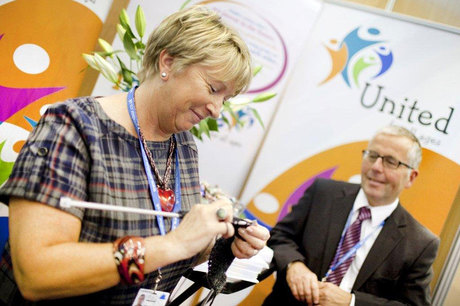
Are intergenerational centres more common in the USA? There’s a documentary later this year, Present Perfect, featuring Providence Mount St Vincent in Seattle.
Yes. The Mount is a bit like Pen Green or Reggio Emilia as a centre for excellence which is widely showcased and visited. The Mount is the equivalent in terms of intergenerational co-location. There are other similar centres scattered round the US, Canada, Japan, Singapore, Australia and elsewhere in Europe. Singapore has a national government programme for co-locating childcare and care for older people.
How do you think co-location of nurseries and care homes could work in the UK?
Here, some nurseries are visiting care homes, but much of this is on an ad hoc basis, rather than regularly. We’ve been meeting with interested nursery groups, care providers, housing associations and local authorities to see how we can develop the idea of co-location of care homes and nurseries. Torbay Council in Devon is starting to develop plans for an intergenerational care site, and the Hadland Care Group, which already runs both Tops Nurseries and care homes, has plans for a co-located site. But others are looking at taking smaller steps too; for example, where a nursery and a care home are next-door neighbours. There are lots of ways to take this idea forward and bring older and young people together. The first co-located nursery and care home is due to open this autumn in south west London.
What do you think are the benefits for old and young in this care model?
For children there are opportunities for learning and development, plus contact with older people who may not be around in their own families. It can tackle the stigma of ageism, disability and dementia, and increase understanding among children. It can reduce the loneliness and isolation experienced by some older people.
What are the challenges for nurseries considering this idea, and what practical steps can they take?
The biggest challenge is finding suitable sites and partners. That’s why we brought together providers from both sectors that don’t often meet. Some finance may be needed to oil the wheels, but there should be savings from co-location. Providers need to ensure that regulators are satisfied and that proper safeguarding measures are in place to protect children and vulnerable older people, with staff well-trained and supervised. As always, it’s about a few dynamic pioneers blazing a trail to show what’s possible, and sharing the learning.

Denise Burke and Stephen Burke, founders of United for All Ages









